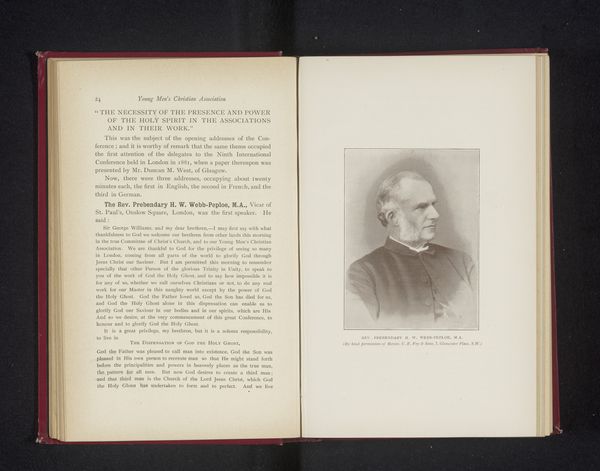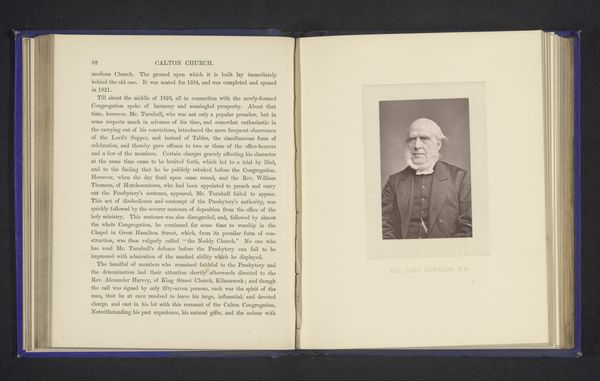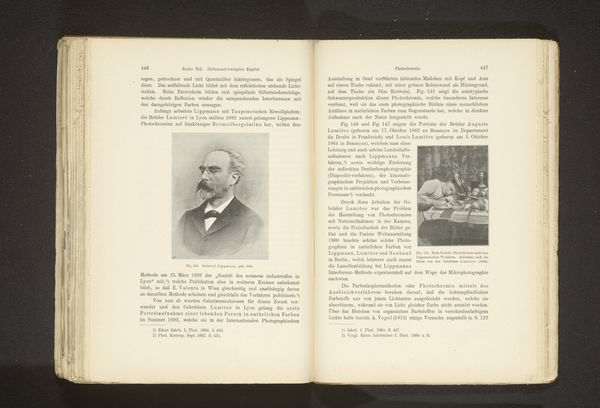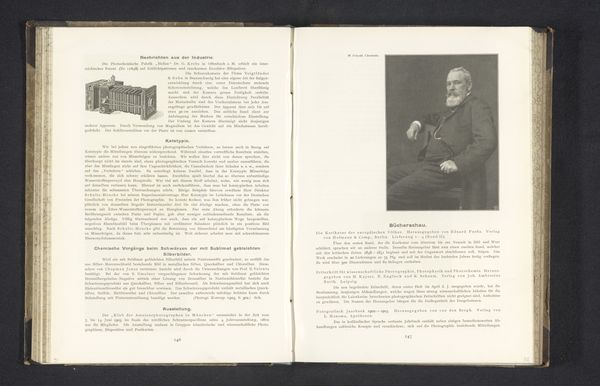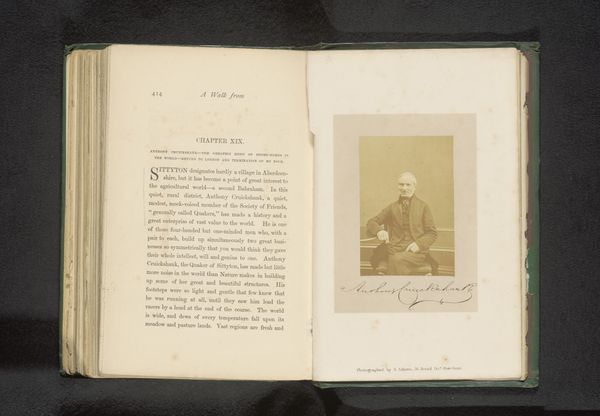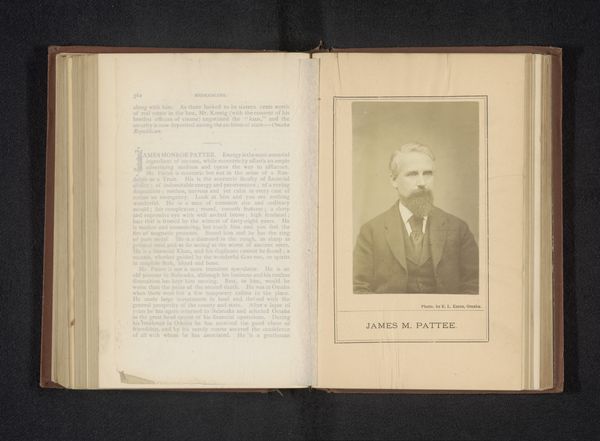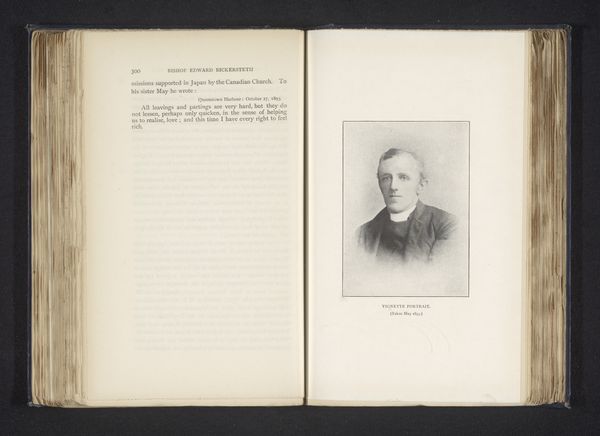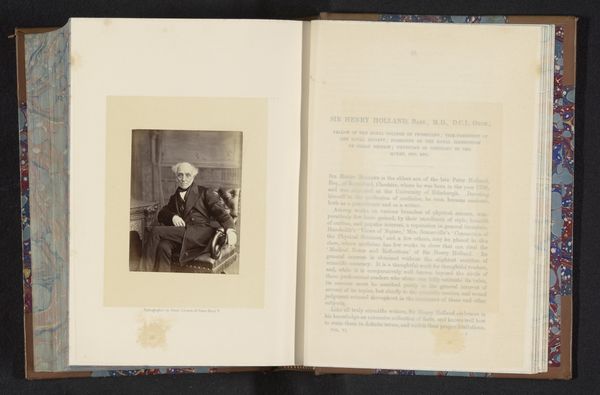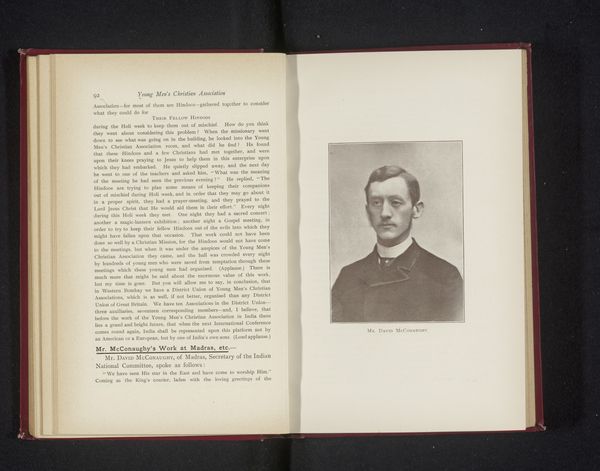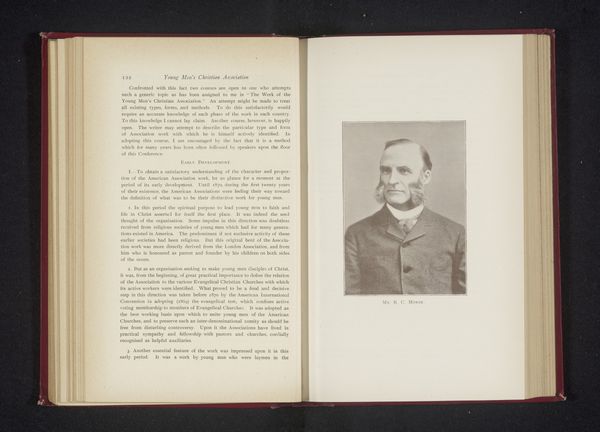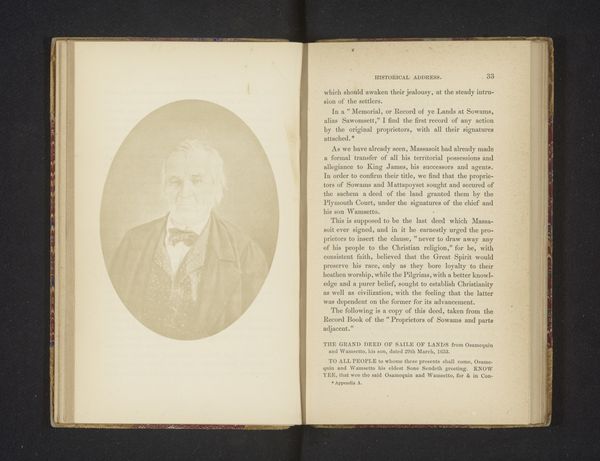
photography, albumen-print
#
portrait
#
aged paper
#
photography
#
academic-art
#
albumen-print
Dimensions: height 102 mm, width 69 mm
Copyright: Rijks Museum: Open Domain
Curator: Here we see an albumen print photograph of Henry Day, dating from before 1881, credited to J. Ludovici. What strikes you initially about this piece? Editor: There's an immediate sense of history, a preserved solemnity. The tones evoke the past, but I see resilience and composure etched in his face. The bordering on the print has symbolic meanings, can you elaborate? Curator: Certainly. This piece, with its subdued sepia tones, invites us to consider the context in which it was made. Albumen prints, popularized in the mid-19th century, became the dominant form for photographic portraiture due to their relative ease of production and sharpness. It is quite literally bits of egg being used as a photographic emulsion! And that decorative bordering likely had great resonance for period viewers. Editor: It is interesting that you talk about albumen as popular "because of the relative ease of production," as each print meant skilled laborers needing to be very efficient with how much albumen was consumed to maintain production goals. The borders that Ludovici incorporates into the image reminds me of classical architectural ornament: dentils, rosettes, repeating squares. They invoke not only respect, but memory of something ancient. Did Mr. Day choose it? Curator: While we don’t know for sure if Mr. Day had a hand in choosing that frame, this piece exemplifies a certain aesthetic trend. Such portraits aimed to memorialize and ennoble the sitter, aligning him with ideals of virtue and civic duty and respect. Also it would be interesting to research the distribution networks, to figure out who these portraits were accessible to, socially speaking, at the time! Editor: He could have chosen the borders to reflect something meaningful for him, like the emblems and iconography favored in his profession, but in the end he had to be able to access this particular frame somehow and somewhere. The portrait exudes not only the gravity of a legal figure, but echoes a desire to connect with permanence and stability and alludes to notions of higher value! Thanks, I did learn a lot. Curator: My pleasure. Considering the materiality alongside its symbolism allows a deeper understanding of this photograph as a cultural artifact, not just an image.
Comments
No comments
Be the first to comment and join the conversation on the ultimate creative platform.
